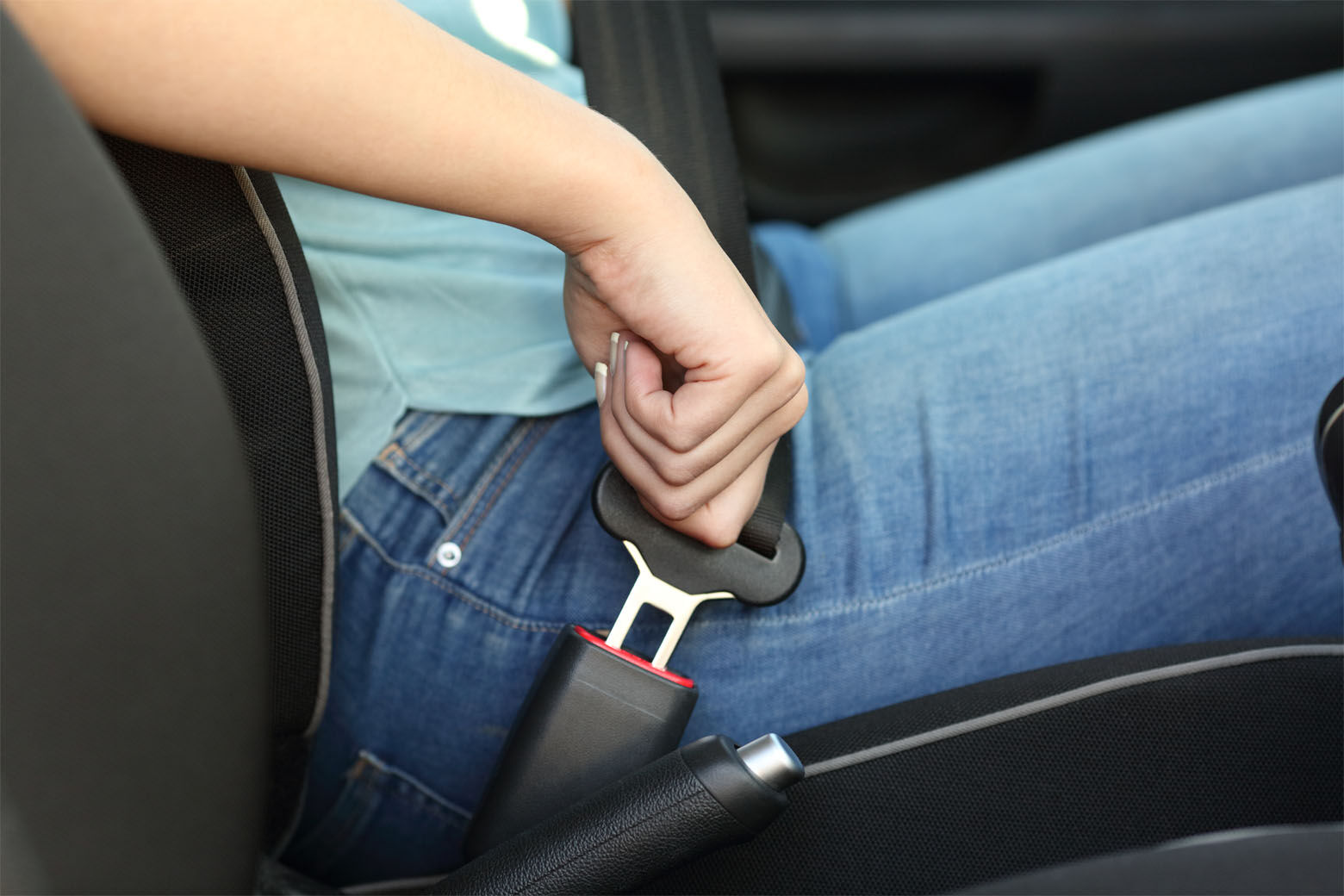
With holiday travel looming, a survey in Maryland shows the percentage of drivers who buckle up dipped slightly in 2023, from 92.7% to 92.1%.
While that may seem like a minimal drop in the number of people who choose to buckle up before hitting the road, Dr. David Efron, chief of trauma surgery and medical director at the R. Adams Cowley Shock Trauma Medical Center at the University of Maryland, said the number is significant.
“You know that .6% drop as a sample in a 9-million-person population in Maryland represents almost 55,000 patients — or 55,000 people at-risk” for serious injury in the event of a crash, said Efron.
The survey was released by Maryland’s Motor Vehicle Administration Highway Safety Office, which is encouraging drivers and passengers to use their seat belts every time they get in their cars.
The data from the annual Roadside Observational Survey was completed in June of 2023 and included observations of 33,882 drivers of passenger vehicles and trucks in 14 locations across Maryland. Data on seat belt use included observations along highways, secondary and local roads.
When it comes to traveling on local roads, the study showed a nearly 4% drop in the number of people who used their seat belts. That’s cause for concern, officials said, because according to the National Highway Traffic Safety Administration, 69% of crashes occur within 10 miles of a home, and 52% occur within just five miles.
So far this year, 108 people who were not wearing seat belts died in crashes on Maryland roads, according to the MVA’s Highway Safety Office.
In a statement announcing the findings, Maryland Motor Vehicle Administrator Chrissy Nizer urged drivers and their passengers to buckle up every time, for every trip.
“Buckling up takes less than three seconds and is the single most effective way to prevent death and serious injury in a crash,” Nizer said. “It’s a very simple equation: seat belts save lives.”
Seat belts don’t eliminate the potential for injuries in serious crashes, Efron said. Pelvic fractures, abdominal trauma and head trauma can occur even when drivers and passengers are belted. But, Efron emphasized, “Risk from the seat belt is absolutely dwarfed by the risk of not wearing a seat belt.”
Without a seat belt on, drivers and their passengers can be jolted so violently that they are ejected from the vehicle.
“If the seat belt is not engaged and you are flying around in the car, or worse, you are ejected from the car … the incidence and severity of these injuries goes significantly up.”
Efron is familiar with the concern from some drivers that seat belts just don’t fit their bodies.
“There are ways to have the seat belt be more comfortable,” he said, referring to commercially available seat belt adjusters and extenders. “This is coming from a person who is almost seven feet tall. The car was not designed for me.”
Driver behavior seems to have an impact on passenger seat belt use, according to the findings in the survey. In vehicles where the driver was buckled up, 93% of passengers were also wearing their seat belts. In vehicles where the driver wasn’t belted, just 35% of passengers had their seat belts on.
According to the National Highway Traffic Safety Administration, there is a persistent belief that trucks and SUVs provide more protection to drivers and passengers, so seat belts aren’t needed.
In the Maryland survey, overall seat belt use in trucks is just 89% and the rate drops to just under 74% for trucks traveling on local roads. According to the Maryland MVA Highway Safety Office, trucks and SUVs are much more prone to roll over in high impact crashes, but a seat belt can reduce the risk of fatal injuries to front seat drivers and passengers by 60%.
Drivers may believe that because their car or truck has an air bag, they don’t need to wear their seat belts. But Efron said, “these are two totally different systems.” While both are designed to boost your safety when driving, “they’re not interchangeable.”
Bottom line, said Efron, whether you’re the driver, the passenger, in the front seat or the back seat, “seat belts are super important.”
Maryland law requires every driver and passenger to wear a seat belt. If passengers older than 16 are not wearing their seat belts, a driver can be fined $83 for each offense. Children must be in booster or child safety seats if they are younger than 8 years old. The exception is for children 4’9″ tall or taller.
